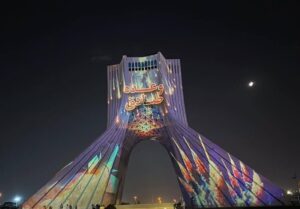Introduction:
Goharshad Mosque is a distinguished congregational mosque situated in Mashhad, Razavi Khorasan Province, Iran. This architectural gem, rooted in the Timurid period, holds historical significance within the expansive Imam Reza shrine complex.
History:
Construction by Empress Goharshad: Commissioned in 1418 CE by Empress Goharshad, the mosque was a testament to the Timurid dynasty’s architectural prowess. The skilled Ghavameddin Shirazi, known for his contributions to Shah Rukh’s grand structures, orchestrated the mosque’s design. Craftsmen from Shiraz and Isfahan lent their expertise to this monumental project.
Renovations through Safavid and Qajar Eras: Over the centuries, Goharshad Mosque underwent renovations during the Safavid and Qajar eras, preserving its cultural and historical significance. The structure boasts a spacious courtyard, measuring 50 m × 55 m (164 ft × 180 ft), featuring four iwans and several shabestans.
Challenges and Transformations:
Damage and Reconstruction of the Dome: In 1911, the mosque faced severe damage to its double-layered dome during bombings by Russian Empire troops. Fast forward to the 1960s, the dome encountered structural instability due to earthquakes, historical bombings, and an attack in 1935. Under Mohammad Reza Pahlavi’s orders, a transformative reconstruction took place. Ancient tiles were removed, an external shell with an iron frame and cement covering was installed, and the dome underwent meticulous re-tiling, altering the mosque’s historical identity.
Restoration of the Eastern Iwan: Simultaneously, in the 1960s, the eastern iwan of the mosque underwent restoration. Completely reconstructed from concrete, it preserved the aesthetic style of the original, showcasing the commitment to maintaining the mosque’s architectural integrity.
Post-Revolution Expansions:
Addition of “Sahn-e-Qods” Courtyard: Following the 1979 Islamic Revolution, expansion plans for the entire Shrine complex materialized. The historic bazaar leading up to Goharshad Mosque was replaced by a new courtyard named “Sahn-e-Qods,” reflecting a harmonious blend of tradition and modernity.
Architectural Brilliance:
Arthur Pope’s Perspective: According to the renowned scholar of Persian architecture, Arthur Pope, Goharshad Mosque stands as the first and greatest surviving Persian monument of the fifteenth century. Pope eloquently describes the Samarkand-style portal, minarets, and the entire court facade adorned with enamel brick and mosaic faience. The vibrant color palette, intricate patterns, and architectural elements contribute to a visually stunning and harmonious experience.
Avoidance of Monotony and Distracting Intricacy: Pope applauds the mosque’s ability to evade monotony and distracting intricacy through energetic floral patterns, geometric schemes, rhythmic arcades, galleries, deep recesses, and the impactful contrast of the ivans, ensuring a captivating and balanced aesthetic.
Goharshad Mosque stands as a testament to architectural grandeur and historical significance. Its enduring legacy weaves together centuries of cultural and artistic heritage, making it a must-visit destination for those seeking to explore the rich tapestry of Iran’s history and architectural marvels.






